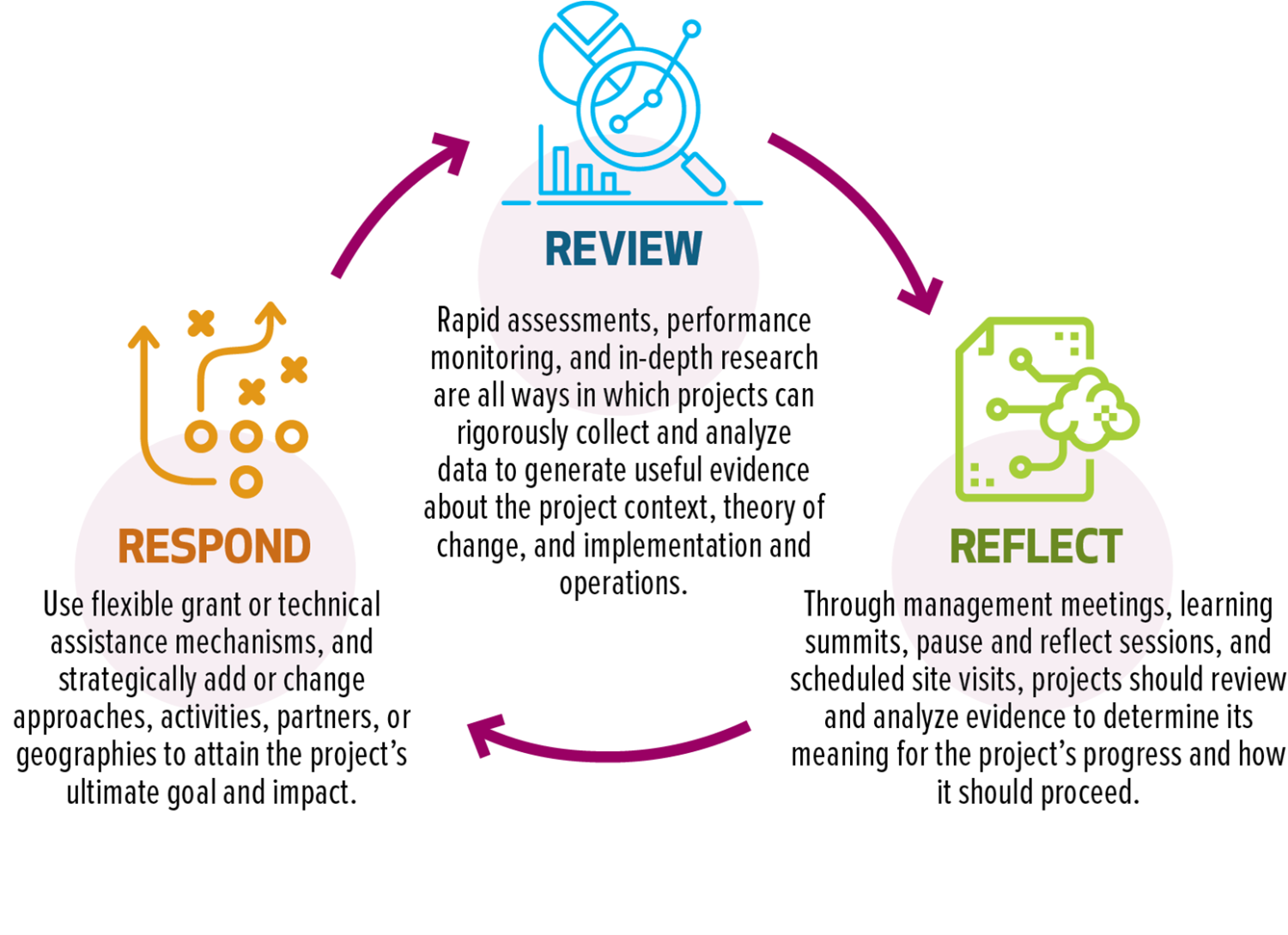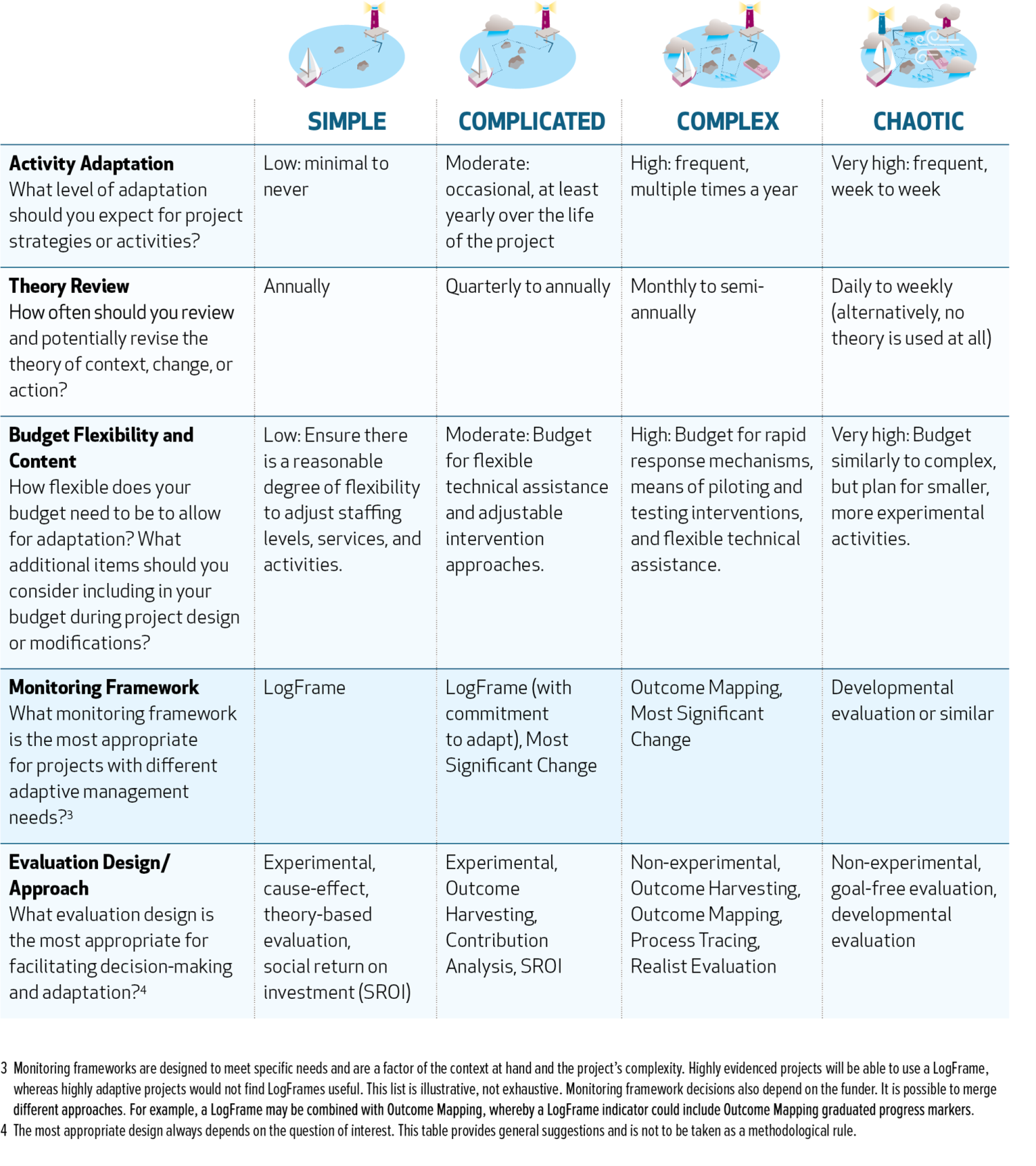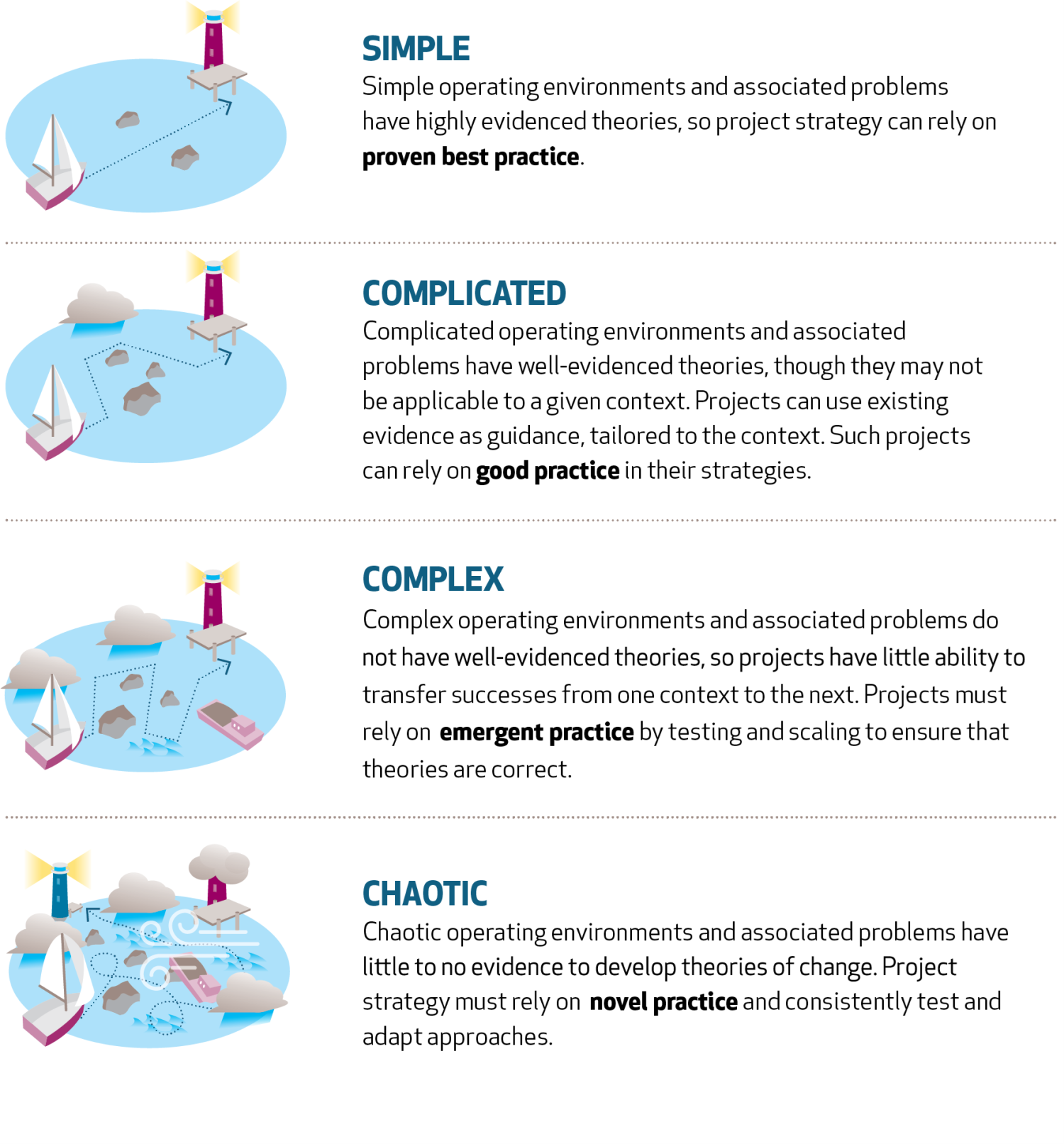Rhetoric or Redundant? Making the Most of Adaptive Management
Making the Most of Adaptive Management in International Development
“Adaptive management” has become one of those pieces of jargon dropped into international development program plans and proposals as an all-encompassing, sometimes throw-away term with little practical meaning. Yet we continue to use it. Why? Because while it often conceals more than it illuminates, it also represents something essential: the idea that a project must be managed in a way that enables ethical adaptation as the problem, context, or project needs shift.
This concept has become a self-evident truth, such that the “adaptive” in adaptive management borders on redundancy. However, that it has become self-evident says a lot about how much our thinking has advanced over the years, from measuring success based on strict adherence to workplans and tasks and bean-counting, to a gradual embrace of uncertainty and systems complexity. Yet the practical application of managing adaptively remains varied and nebulous. To discuss different models, Pact convened a panel of leading practitioners and thinkers in effectively applying adaptive management.

The panel featured Emily Janoch (Deputy Director for Research, Innovation, Evaluation, and Learning for the CARE USA Food and Nutrition Security team), David Jacobstein (Democracy Specialist in the Cross-Sectoral Programs Division of the Democracy, Human Rights, and Governance Center, USAID), and Laura Zambrano (Pact; USAID/Colombia’s Chief of Party for the Migrant Human Rights Activity). The panelists provided concrete tips for designing adaptive projects from the outset, skills to prioritize when building a team, and determining what is “enough” adaptation. Among other tips, Emily noted the need to build in budget flexibility at the outset in anticipation of necessary pivots, as well as for critical adaptive management activities such as learning events and reflection and convening. Laura emphasized the need to articulate the role of adaptive management in the project from day one—including hiring staff able to adapt nimbly —to ensure that all stakeholders are fully bought in well in advance of a need to pivot. She noted that a lengthy inception phase and rapid response funds were particularly helpful aspects in the project she leads.
David explained that the criteria of success for “good enough” adaptive management is whether the project achieved its desired impact, not how many times there was a successful pivot. A good project will demonstrate resilience to internal and external shocks, and it is therefore more important to ask why a project did not change in response to those shocks, rather than whether or how it changed.
The speakers reinforced that projects must now be designed with deliberate acknowledgement of and reference to uncertainty and systems complexity. By that logic, so should the project’s attendant adaptive management systems.
For this reason, in 2020, Pact completed a comprehensive review of existing guidance and toolkits on adaptive management. This included examining not only guidance aimed at international development practitioners, but materials developed in other sectors and industries. Based on this review, we identified the need for practical guidance that helps international development practitioners tailor their management approaches to the degree of uncertainty or complexity facing their project, with the aim of better meeting the needs of Pact’s projects and the communities we serve.

Our approach, detailed in Pact’s new handbook, differentiates a program’s degree of complexity using the Cynefin framework, which was originally articulated by David Snowden in 1999 and published in 2007 with Marie Boone. The Cynefin framework distinguishes between five different sense-making contexts: simple, complicated, complex, chaotic, and disorder. Pact’s simple premise is that we must first understand a project’s degree of complexity to determine the ideal adaptive management system in order to manage uncertainty and achieve project goals. Importantly, the “adaptive management system” must be holistic in nature and involves hiring decisions (i.e. hiring the right people), the selected monitoring framework, resource allocations, and more.
How do we determine a program’s degree of complexity? Building off lessons drawn from program evaluation, and in particular the contributions of Patricia Rogers and Sue Funnell, we developed a straightforward program complexity determination questionnaire that differentiates complexity in three program theory domains: theory of context, theory of change, and theory of action. These three domains may have different degrees of complexity, and their unique combination suggests an overall strategy for the program.

We designed the handbook to provide practical guidance for practitioners. For example, this included providing simple recommendations regarding how to structure their processes and resources based on the level of complexity:

We also provided a set of concrete tools and “how-to” guidance to help practitioners conduct learning reviews, hire for adaptive management-friendly mindsets, and track management decisions. A full list of tools is provided here:
1. Adaptive Management Intensity Self-Questionnaire
2. Staff Roles and Responsibilities in Adaptive Management
3. Scenario Planning Decision Matrix and Template
4. Guide to Context Indicators for Adaptive Management
5. Reflection Meeting Template
6. Learning and Reflection Meeting Agenda Template
7. Guide to Preparing for Learning Reviews
8. Decision Tracker for Adaptive Management
This is a living document and we hope to adapt it as we learn from our projects and peers. We invite you to share your feedback and experiences!
(with thanks to Mason Ingram, Kate Byom, and Lauren Serpe)



